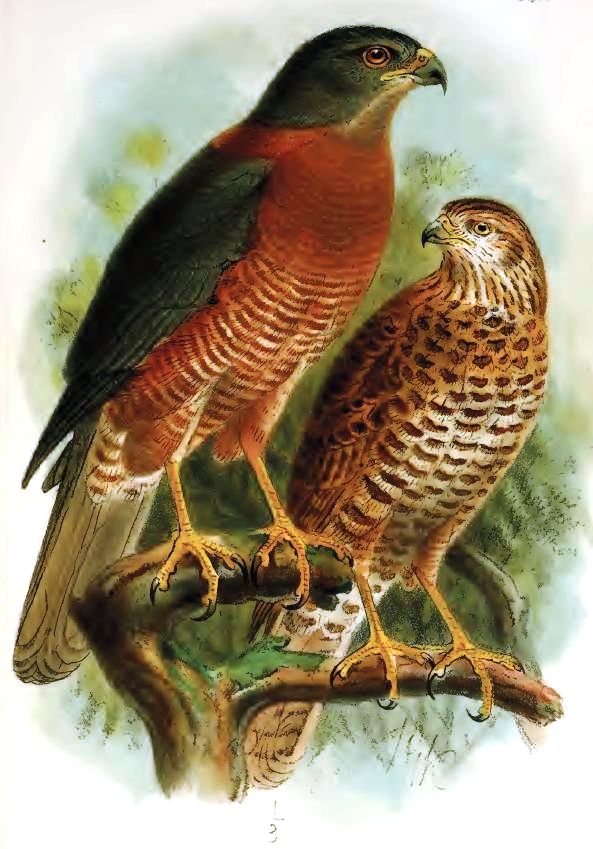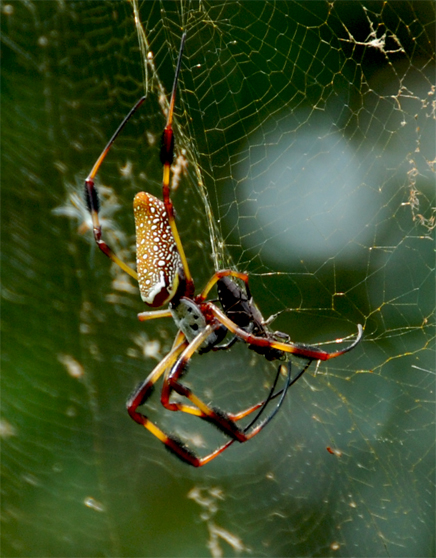|
Paratemnoides Pococki
''Paratemnoides pococki'' is a species of pseudoscorpion in the Atemnidae family. It is endemic to Australia. It was described in 1907 by Danish arachnologist Carl Johannes With. Distribution and habitat The species occurs on the Australian territory of Christmas Island in the eastern Indian Ocean. The type locality is the north coast of the island. Behaviour The pseudoscorpions are terrestrial predators Predation is a biological interaction in which one organism, the predator, kills and eats another organism, its prey. It is one of a family of common feeding behaviours that includes parasitism and micropredation (which usually do not kill .... References Atemnidae Endemic fauna of Australia Pseudoscorpions of Australia Fauna of Christmas Island Animals described in 1907 Taxa named by Carl Johannes With {{pseudoscorpion-stub ... [...More Info...] [...Related Items...] OR: [Wikipedia] [Google] [Baidu] |
Carl Johannes With
Carl Johannes With (11 December 1877 – 16 June 1923) was a Danish medical doctor and arachnologist, specialising in pseudoscorpions and mites. With was born in Lemvig to Nicolai Rasmus With and his wife Rasmine Sophie Dorothea With, but was orphaned by the age of five. With married Inge Kiørboe on 1 July 1909, and together they had three children. With died in 1923 in Skibstrup, in the parish of Hellebæk ( Helsingør Municipality), while still working on a dissertation on lupus. Zoological career After studying at the University of Oxford in 1896, With studied natural history and geography, and in 1904, undertook a research trip to England and in particular, the collections of the British Museum. In 1905, he won the ' (Schibbye Prize) for his work on Opilioacariformes. Medical career With was not confident that zoology could provide a secure future, so he studied medicine, including time at the ' in Paris. He took part in the Franco–Danish leprosy expedition to the Da ... [...More Info...] [...Related Items...] OR: [Wikipedia] [Google] [Baidu] |
Indian Ocean
The Indian Ocean is the third-largest of the world's five oceanic divisions, covering or approximately 20% of the water area of Earth#Surface, Earth's surface. It is bounded by Asia to the north, Africa to the west and Australia (continent), Australia to the east. To the south it is bounded by the Southern Ocean or Antarctica, depending on the definition in use. The Indian Ocean has large marginal or regional seas, including the Andaman Sea, the Arabian Sea, the Bay of Bengal, and the Laccadive Sea. Geologically, the Indian Ocean is the youngest of the oceans, and it has distinct features such as narrow continental shelf, continental shelves. Its average depth is 3,741 m. It is the warmest ocean, with a significant impact on global climate due to its interaction with the atmosphere. Its waters are affected by the Indian Ocean Walker circulation, resulting in unique oceanic currents and upwelling patterns. The Indian Ocean is ecologically diverse, with important ecosystems such ... [...More Info...] [...Related Items...] OR: [Wikipedia] [Google] [Baidu] |
Fauna Of Christmas Island
The wildlife of Christmas Island is composed of the flora and fauna of this isolated island in the tropical Indian Ocean. Christmas Island is the summit plateau of an underwater volcano. It is mostly clad in tropical rainforest and has karst, cliffs, wetlands, coasts and sea. It is a small island with a land area of , 63% of which has been declared a National park. Most of the rainforest remains intact and supports a large range of Endemism, endemic species of animals and plants. Geography The island is about long and wide. The total land area is , with of coastline. The island is the flat summit of an underwater volcano more than high, with about being submerged and only about above the surface. Some basalt is exposed in places but most of the surface rock is limestone accumulated from coral growth. The karst terrain supports numerous anchialine pools. Steep cliffs along much of the coast rise abruptly to a central plateau. The island is mainly covered by tropical rainfore ... [...More Info...] [...Related Items...] OR: [Wikipedia] [Google] [Baidu] |
Pseudoscorpions Of Australia
Pseudoscorpions, also known as false scorpions or book scorpions, are small, scorpion-like arachnids belonging to the order Pseudoscorpiones, also known as Pseudoscorpionida or Chelonethida. Pseudoscorpions are generally beneficial to humans because they prey on clothes moth larvae, carpet beetle larvae, booklice, ants, mites, and small flies. They are common in many environments, but they are rarely noticed due to their small size. When people see pseudoscorpions, especially indoors, they often mistake them for ticks or small spiders. Pseudoscorpions often carry out phoresis, a form of commensalism in which one organism uses another for the purpose of transport. Characteristics Pseudoscorpions belong to the class Arachnida. They are small arachnids with a flat, pear-shaped body, and pincer-like pedipalps that resemble those of scorpions. They usually range from in length.Pennsylvania State University, DepartmentEntomological Notes: Pseudoscorpion Fact Sheet/ref> The large ... [...More Info...] [...Related Items...] OR: [Wikipedia] [Google] [Baidu] |
Endemic Fauna Of Australia
Endemism is the state of a species being found only in a single defined geographic location, such as an island, state, nation, country or other defined zone; organisms that are indigenous to a place are not endemic to it if they are also found elsewhere. For example, the Cape sugarbird is found exclusively in southwestern South Africa and is therefore said to be ''endemic'' to that particular part of the world. An endemic species can also be referred to as an ''endemism'' or, in scientific literature, as an ''endemite''. Similarly, many species found in the Western ghats of India are examples of endemism. Endemism is an important concept in conservation biology for measuring biodiversity in a particular place and evaluating the risk of extinction for species. Endemism is also of interest in evolutionary biology, because it provides clues about how changes in the environment cause species to undergo range shifts (potentially expanding their range into a larger area or becomin ... [...More Info...] [...Related Items...] OR: [Wikipedia] [Google] [Baidu] |
Predation
Predation is a biological interaction in which one organism, the predator, kills and eats another organism, its prey. It is one of a family of common List of feeding behaviours, feeding behaviours that includes parasitism and micropredation (which usually do not kill the Host (biology), host) and parasitoidism (which always does, eventually). It is distinct from Scavenger, scavenging on dead prey, though many predators also scavenge; it overlaps with Herbivore, herbivory, as Seed predation, seed predators and destructive frugivores are predators. Predation behavior varies significantly depending on the organism. Many predators, especially carnivores, have evolved distinct hunting strategy, hunting strategies. Pursuit predation involves the active search for and pursuit of prey, whilst ambush predation, ambush predators instead wait for prey to present an opportunity for capture, and often use stealth or aggressive mimicry. Other predators are opportunism, opportunistic or om ... [...More Info...] [...Related Items...] OR: [Wikipedia] [Google] [Baidu] |
Terrestrial Animal
Terrestrial animals are animals that live predominantly or entirely on land (e.g. cats, chickens, ants, most spiders), as compared with aquatic animals, which live predominantly or entirely in the water (e.g. fish, lobsters, octopuses), and semiaquatic animals, which rely on both aquatic and terrestrial habitats (e.g. platypus, most amphibians). Some groups of insects are terrestrial, such as ants, butterflies, earwigs, cockroaches, grasshoppers and many others, while other groups are partially aquatic, such as mosquitoes and dragonflies, which pass their larval stages in water. Alternatively, terrestrial is used to describe animals that live on the ground, as opposed to arboreal animals that live in trees. Ecological subgroups The term "terrestrial" is typically applied to species that live primarily on or in the ground, in contrast to arboreal species, who live primarily in trees, even though the latter are actually a specialized subgroup of the terre ... [...More Info...] [...Related Items...] OR: [Wikipedia] [Google] [Baidu] |
Type (biology)
In biology, a type is a particular specimen (or in some cases a group of specimens) of an organism to which the scientific name of that organism is formally associated. In other words, a type is an example that serves to anchor or centralizes the defining features of that particular taxon. In older usage (pre-1900 in botany), a type was a taxon rather than a specimen. A taxon is a scientifically named grouping of organisms with other like organisms, a set that includes some organisms and excludes others, based on a detailed published description (for example a species description) and on the provision of type material, which is usually available to scientists for examination in a major museum research collection, or similar institution. Type specimen According to a precise set of rules laid down in the International Code of Zoological Nomenclature (ICZN) and the ''International Code of Nomenclature for algae, fungi, and plants'' (ICN), the scientific name of every taxon is ... [...More Info...] [...Related Items...] OR: [Wikipedia] [Google] [Baidu] |
Christmas Island
Christmas Island, officially the Territory of Christmas Island, is an States and territories of Australia#External territories, Australian external territory in the Indian Ocean comprising the island of the same name. It is about south of Java and Sumatra and about north-west of the closest point on the mainland Australia, Australian mainland. It has an area of . Christmas Island's geographic isolation and history of minimal human disturbance has led to a high level of endemism among its flora and fauna, which is of interest to scientists and naturalists. The territory derives its name from its discovery on Christmas Day 1643 by Captain William Mynors. The first European to sight Christmas Island was Richard Rowe of the ''Thomas'' in 1615. Mynors gave it its name. It was first settled in the late 19th century, after abundant phosphate deposits were found, originally deposited as guano, leading Britain to annex the island in 1888 and begin commercial mining in 1899. The J ... [...More Info...] [...Related Items...] OR: [Wikipedia] [Google] [Baidu] |
Species
A species () is often defined as the largest group of organisms in which any two individuals of the appropriate sexes or mating types can produce fertile offspring, typically by sexual reproduction. It is the basic unit of Taxonomy (biology), classification and a taxonomic rank of an organism, as well as a unit of biodiversity. Other ways of defining species include their karyotype, DNA sequence, morphology (biology), morphology, behaviour, or ecological niche. In addition, palaeontologists use the concept of the chronospecies since fossil reproduction cannot be examined. The most recent rigorous estimate for the total number of species of eukaryotes is between 8 and 8.7 million. About 14% of these had been described by 2011. All species (except viruses) are given a binomial nomenclature, two-part name, a "binomen". The first part of a binomen is the name of a genus to which the species belongs. The second part is called the specific name (zoology), specific name or the specific ... [...More Info...] [...Related Items...] OR: [Wikipedia] [Google] [Baidu] |
Arachnology
Arachnology is the science, scientific study of arachnids, which comprise spiders and related invertebrates such as scorpions, Pseudoscorpionida, pseudoscorpions, Opiliones, harvestmen, Tick, ticks, and mites. Those who study spiders and other arachnids are arachnologists. More narrowly, the study of spiders alone (Order (biology), order Araneae) is known as araneology. The word "wiktionary:arachnology, arachnology" derives from the Ancient Greek words , ''arachnē'', "spider"; and , ''-logia'', "the study of a particular subject". The greek word for "spider" itself refers to Arachne, the female protagonist of an ancient tale of the Greek mythology, Greek Mythology. Arachnology as a science Arachnologists are primarily responsible for biological classification, classifying arachnids and studying aspects of their biology. In the popular imagination, they are sometimes referred to as spider experts. Disciplines within arachnology include naming species and determining their phylog ... [...More Info...] [...Related Items...] OR: [Wikipedia] [Google] [Baidu] |
Species Description
A species description is a formal scientific description of a newly encountered species, typically articulated through a scientific publication. Its purpose is to provide a clear description of a new species of organism and explain how it differs from species that have been previously described or related species. For a species to be considered valid, a species description must follow established guidelines and naming conventions dictated by relevant nomenclature codes. These include the International Code of Zoological Nomenclature (ICZN) for animals, the International Code of Nomenclature for algae, fungi, and plants (ICN) for plants, and the International Committee on Taxonomy of Viruses (ICTV) for viruses. A species description often includes photographs or other illustrations of type material and information regarding where this material is deposited. The publication in which the species is described gives the new species a formal scientific name. Some 1.9 million ... [...More Info...] [...Related Items...] OR: [Wikipedia] [Google] [Baidu] |








